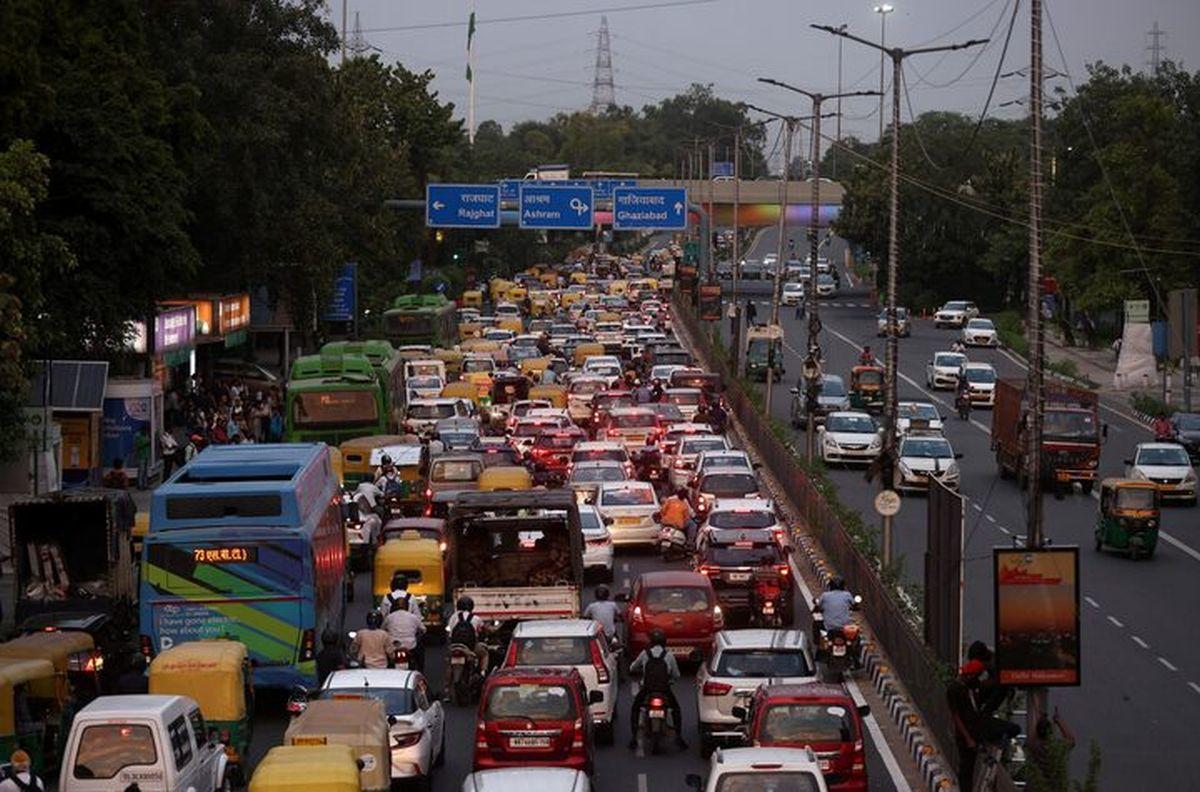Truck rentals saw a positive momentum across most key trunk routes due to an increased pre-kharif agricultural activity and a resilient manufacturing sector.

Photograph: Francis Mascarenhas/Reuters
The Kolkata–Guwahati–Kolkata corridor witnessed a month-on-month (M-o-M) rise of 2.4 per cent, while the Mumbai-Chennai–Mumbai route grew by 1.9 per cent and the Delhi-Hyderabad-Delhi route saw a 1.6 per cent increase in truck rentals, said June edition of the Shriram Mobility Bulletin.
On a year-on-year (Y-o-Y) basis, truck rentals surged 14 per cent on the Kolkata–Guwahati–Kolkata route and 12 per cent on the Mumbai–Chennai–Mumbai corridor and 9 per cent on the Delhi-Hyderabad-Delhi route.
The June edition of the report reflects a steady recovery in India’s logistics and mobility ecosystem, supported by pre-kharif agricultural activity and the manufacturing sector targeting exports.
Farm-linked categories and electric vehicles stood out as growth drivers in automotive sales, underlining the evolving contours of India’s mobility landscape.
Fuel consumption dipped month-on-month in June, but petrol and diesel sales rose Y-o-Y by 6.4 per cent and 1.2 per cent respectively. FASTag transaction volumes (in Mn) and values (in Cr) also witnessed a fall M-o-M, but saw a Y-O-Y spike by 16 per cent and 18 per cent respectively.
Vehicle retail sales in June 2025 reflected a mixed trend.
While overall numbers declined M-o-M due to seasonal factors, farm and infra-linked categories showed resilience.
Agricultural tractors grew 3 per cent M-o-M and 4 per cent Y-o-Y, supported by pre-kharif demand and stable rural cash flows.
Construction equipment vehicles saw a strong uptick of 12 per cent M-o-M and 25 per cent Y-o-Y, driven by sustained infrastructure activity.
Commercial tractors also rose 5 per cent M-o-M and 2 per cent Y-o-Y.
Meanwhile, motor car sales dipped 12 per cent M-o-M and 6 per cent Y-o-Y, and two-wheelers contracted 18 per cent M-o-M and 1 per cent Y-o-Y as consumers deferred discretionary purchases amid market uncertainty.
The electric vehicle segment maintained its strong momentum in June 2025 supported by strong consumer demand and the introduction of new models.
Electric two wheelers grew 5 per cent M-o-M and surged 254 per cent Y-o-Y, reflecting their increasing popularity for urban mobility.
Electric three wheelers recorded a 2 per cent M-o-M rise and an impressive 663 per cent Y-o-Y growth, driven by demand in last-mile delivery and commercial transport.
EV motor car sales also edged up 1 per cent M-o-M and soared 1267 per cent Y-o-Y, reflecting broader adoption across consumer segments.
Y S Chakravarti, CEO and managing director, Shriram Finance Ltd said, “June 2025 underscored a positive shift in economic momentum across the transportation sector.
“Truck rentals saw healthy month-on-month growth, spurred by a revival in manufacturing activity.
“Export-driven freight shows continued resilience, setting a constructive tone for Q2.
“While fuel consumption and FASTag collections dipped slightly, their sharp year-on-year rise signals enduring structural recovery and seasonal mobility trends.”
“However, passenger car sales continue to reel under subdued consumer sentiment, shaped by ongoing market uncertainty.
“Encouragingly, early monsoon onset and increased rural economic activity have strengthened tractor demand, with agriculture-linked mobility seeing renewed traction.
“Meanwhile, the electric vehicle segment is accelerating ahead of forecasts, powered by robust consumer interest and a wave of fresh model launches by leading automakers,” he said.
E-way bill generation reflected steady growth in May.
Intra-state e-way bill generations rose 4 per cent M-o-M and 19 per cent Y-o-Y, with the transaction value up 2 per cent M-o-M and 12 per cent Y-o-Y at ₹15.04 trillion.
Similarly, inter-state e-way bill generations grew 1 per cent M-o-M and 19 per cent Y-o-Y, while the value of transactions climbed 4 per cent M-o-M and 10 per cent Y-o-Y to Rs 13.13 trillion.
The consistent uptick underscores sustained supply chain momentum driven by strong domestic consumption and early monsoon stock movements.
Fuelling momentum
- Pre-Kharif agricultural activity
- Export-led manufacturing demand
- Strong EV momentum and demand from the agricultural secto




